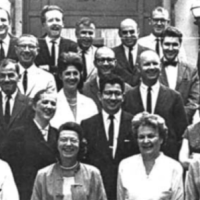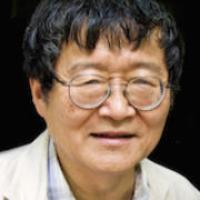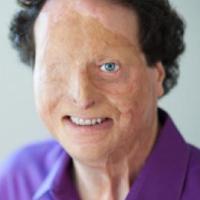The Smith-Kettlewell Eye Research Institute is a non-profit, independent research institute, affiliated with and located adjacent to the California Pacific Medical Center in San Francisco. A medical center campus is ideal for fostering collaboration between laboratory and clinical scientists with first-hand exposure to real biomedical problems and opportunities.

The Smith-Kettlewell Eye Research Institute is a non-profit, independent research institute, world-renowned for the quality of its research on vision, eye diseases, and sensory rehabilitation engineering.
When the Stanford Medical School moved to Palo Alto in 1959, some members elected to remain in San Francisco and form their own medical center and research groups. Dr. Arthur Jampolsky informally established an eye research group including one of the first ocular electromyographic laboratories in this country. In 1963 it was officially incorporated as the San Francisco Eye Research Institute. The new Institute was soon joined by other ophthalmologists and visual scientists interested in research, including the first co-director, Dr. Alan B. Scott.
Patients of Dr Jampolsky, William and Catherine Kettlewell, and Jack Smith, provided important early funding and the name was changed to the Smith-Kettlewell Eye Research Foundation (later Institute). The mission was to create a unique environment for research on human vision -- basic scientific research to increase the understanding of normal vision in support of vision disorders, clinical research to develop new diagnostic procedures and treatments for visual and other sensory disorders, and engineering research to produce better techniques for aid, assistive technology, and rehabilitation of blind and partially sighted people. Space was secured at the medical center campus, to facilitate clinical research collaborations with the Ophthalmology Department of California Pacific Medical Center (now Sutter Health).
Smith-Kettlewell’s success at the forefront of translational research is largely due to a mutually supportive environment where scientists, clinicians, and engineers work closely with the blind and visually impaired community. The Institute has a rich history of using rigorous basic science to develop tools to better understand visual impairment, such as multi-focal ERG to evaluate functional vision across the retina (Sutter, 1991), the sweep Visual Evoked Potential to obtain cortical measures of visual sensitivity (Norcia & Tyler, 1985), and techniques to improve the treatment of strabismus such as the use of adjustable sutures (Jampolsky, 1979) and botulinum toxin (Botox) to weaken extraocular muscles (Scott, 2004). SK has made equally impressive contributions to improving assistive technology for the blind, such as the first sensory substitution device (Bach y Rita et al, 1969), Cognitive-Kinesthetic training demonstrating brain plasticity (Likova, 2012), Talking Signs (Loughborough, 1979), Tactile Maps Automated Production (Miele et al., 2006) and assistive technology research (computer vision applications, Coughlan et al., 2020), assistive instruments and appliances, crowd-sourced audio descriptions of video (Packer et al., 2015).
The tradition continues with a strong series of new and innovative translational research studies aimed at better understanding and impacting the problems of vision and blindness. A timeline of selected research highlights can be found here.














